Casa Calvet
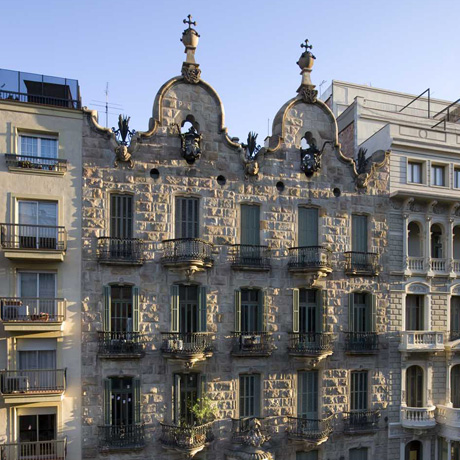
YEAR OF CONSTRUCTION
1898 - 1900
ADDRESS
Carrer de Casp, 48, Barcelona
At the end of the 19th century, the right-hand side of the Eixample district was turning into a flourishing neighbourhood inhabited to a great extent by prosperous textile manufacturers. One of them, Pere Màrtir Calvet, commissioned Antoni Gaudí to build a traditional rental apartment building where he could install his business in the basement and on the ground floor, and use the principal or main floor as his family residence.
Although it may appear to be one of Gaudí’s most conservative and least daring projects, many ornamental details and the layout of spaces, like the lightwell, bear the seal of the great architect. Indeed, in 1900 the building was awarded the prize for the Best Artistic Building of the Year by Barcelona City Council.
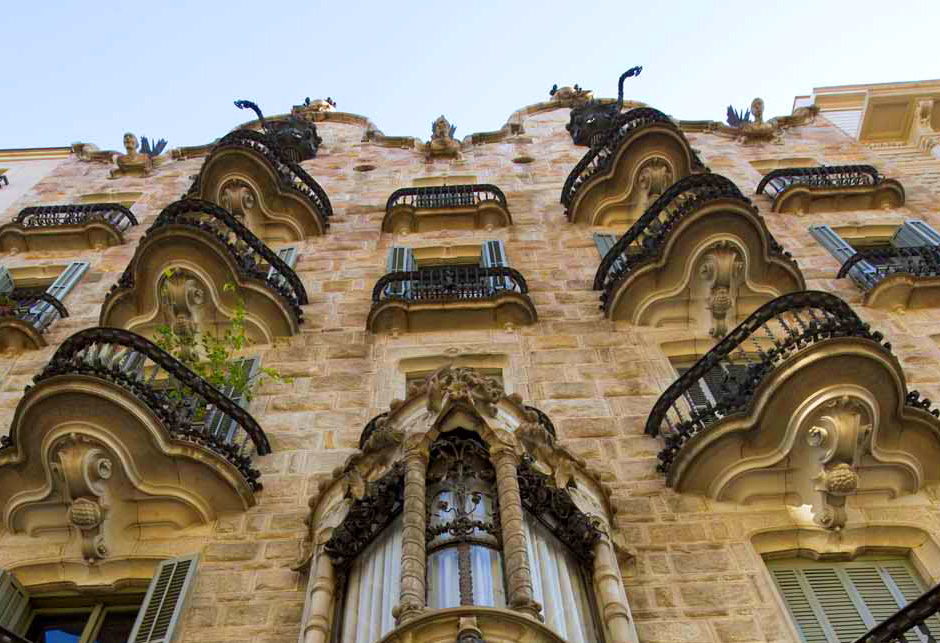
FAÇADES: TRADITIONAL IN FRONT, INNOVATIVE BEHIND
The Calvet House is based on the traditional model which was most popular among the bourgeoisie of the times: a discrete principal floor with a staid elegant bay window and a large terrace overlooking the interior courtyard of the city block. In the rest of the building there are two rental apartments on each floor with five rooms giving onto the façade, in keeping with the most common size of the plots in this area. Gaudí designed the façade on Carrer Casp in a restrained orthodox way but without concealing a certain contained expressionist spirit, which may be glimpsed in the design of the balconies and the bay window.
On the other hand, on designing the rear façade overlooking the interior courtyard of the city block, Gaudí took a completely different approach and eschewed the typical galleries which give the interior courtyards of the Eixample their characteristic domestic appearance. Surprisingly, here the balconies are very similar to those of the front façade of the building and the innovative bay windows provide some well-needed visual and solar protection. The precedent for this is to be found in the Güell Palace, where Gaudí had already experimented with new solutions which he would subsequently apply, adapting them to the needs of each situation. This insistence on improving the characteristics of the rear façades of residential buildings would also mark his work on the Batlló and Milà houses.
SUBTLE ALLEGORICAL DECORATION
One of the prominent spaces of the house is the staircase and the two adjoining lightwells. Gaudí transforms the space necessarily devoted to the vertical accesses of a rental apartment building into a place of beauty that architecturally enhances the whole structure. In the entrance doorway (flanked by columns shaped like spools of thread), there is an original wrought iron door knocker in the shape of a cross which, when used, strikes against a figure of a bed bug, in an allegory of the faith that crushes sin. The first-floor bay window features sculptures of flowers and wild mushrooms, a coat of arms of Catalonia, and references to hospitality (a cypress), to peace (an olive branch) and to abundance (two cornucopias). Projecting from the façade are the busts of three of the Holy Martyrs who are the patron saints of Calvet’s hometown, Vilassar de Dalt. No less remarkable are the two cast iron balconies on the pediments, anticipating those which would later be seen on the Batlló House.
The masterful arrangement and execution of the entrance hall, the staircase, the lift and the two central lightwells pleased the owners so much that Calvet’s sons commissioned Gaudí to do the interior design work of their new offices on the ground floor. Gaudí extended the decorative sense and subtlety to these premises, designing all the furniture: the famous office chairs, the desks, the armchairs and other accessories such as the coat racks, umbrella stands, handles, cranks, signs...
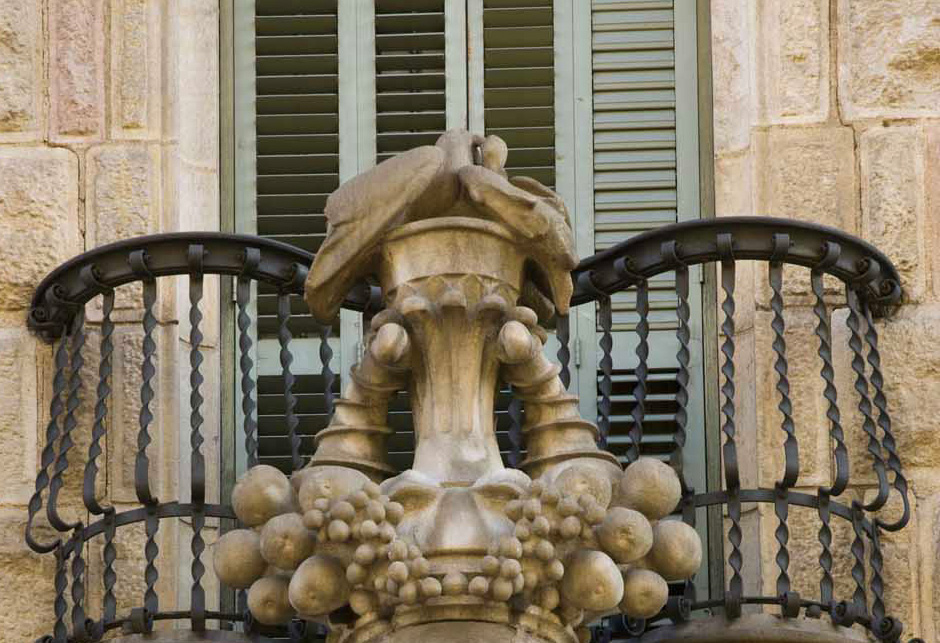
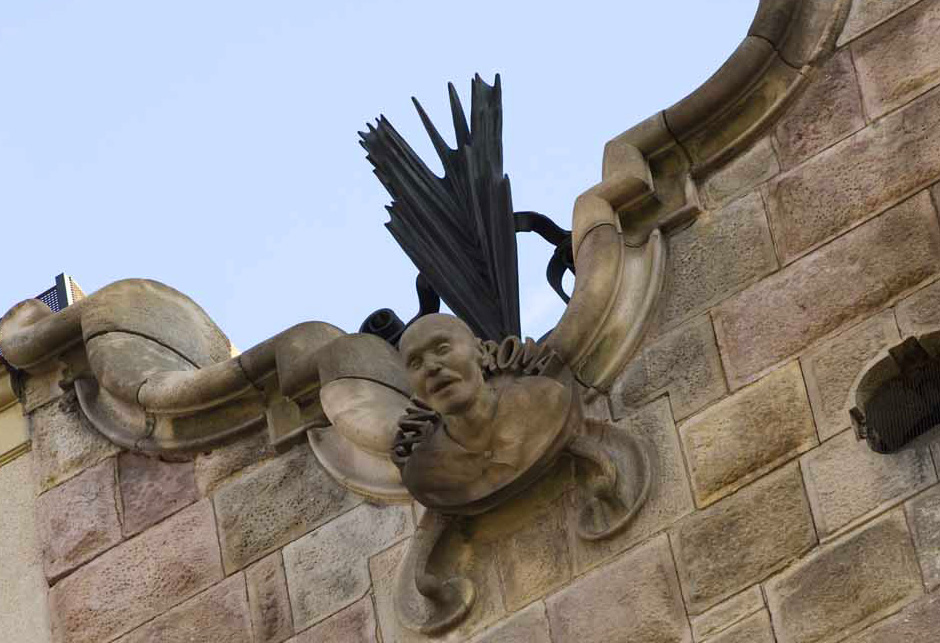
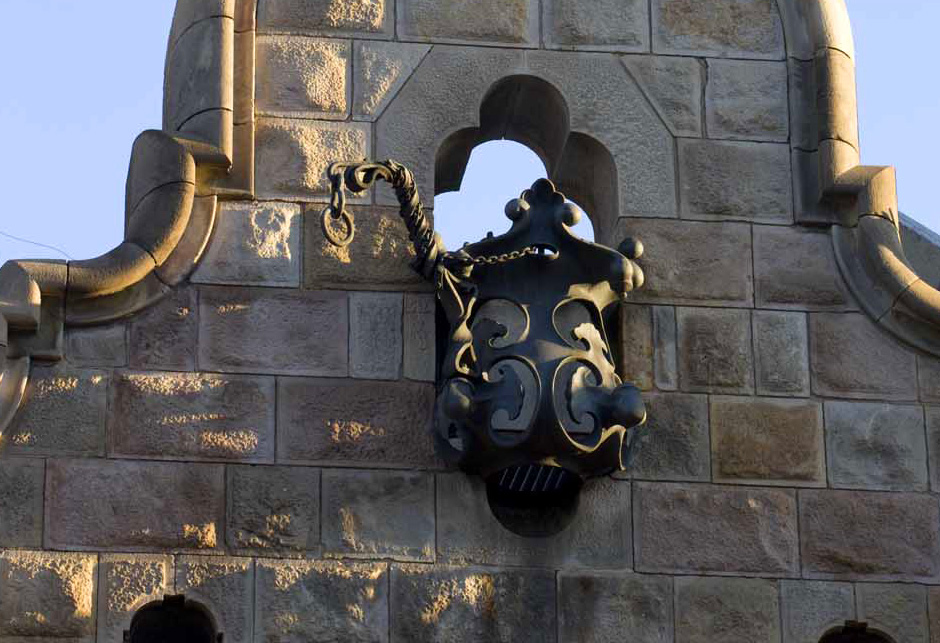
OVERLOOKING THE RULES
The legacy left by Gaudí at the little-known Calvet House has been admirably well preserved, even though its uses and its owners have changed over the course of the years. In particular, this building is essential for an understanding of the evolution of the architect and of his architecture in a broader sense, at the time when he had already earned the professional respect of the Church, the aristocracy, the bourgeoisie and the public authorities. Perhaps it was precisely this respect which led the City Council to close its eyes to the height of the building, which was a few metres taller than the maximum allowed by the municipal ordinances. Indeed, when Gaudí was informed of this circumstance, he refused to change his drawings, “threatening” to lop off the top of the building right along the line that the City Council would be pleased to mark. Fortunately enough, the matter never reached that point.
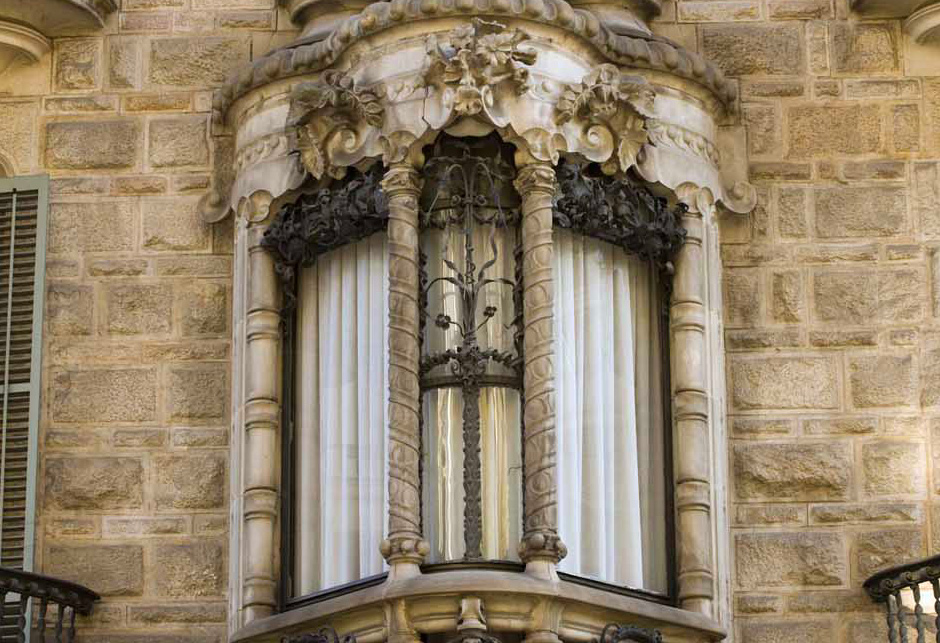
OPENING HOURS
The restaurant is the only part of the building open to visits.
HOW TO GET THERE
Bus: 7, 47, 50, 54, 62, H12
Metro: L4 / L1 – Urquinaona station